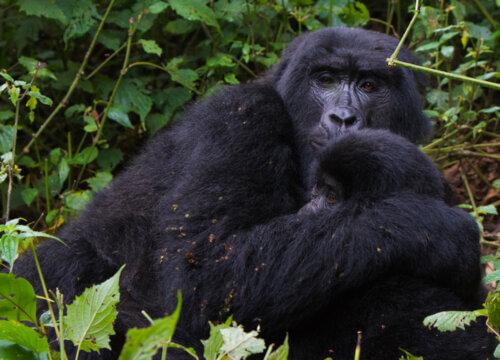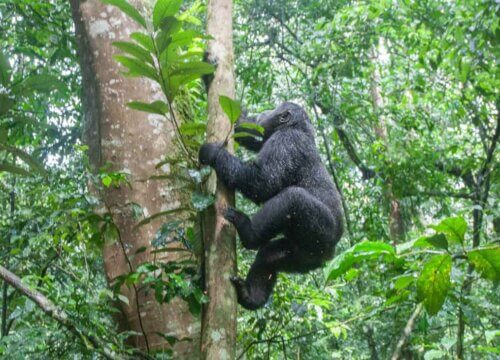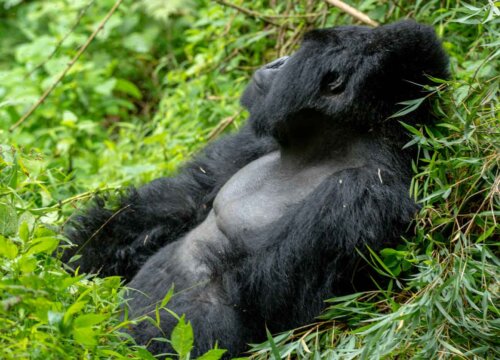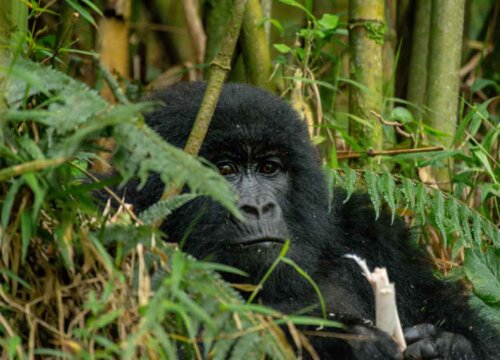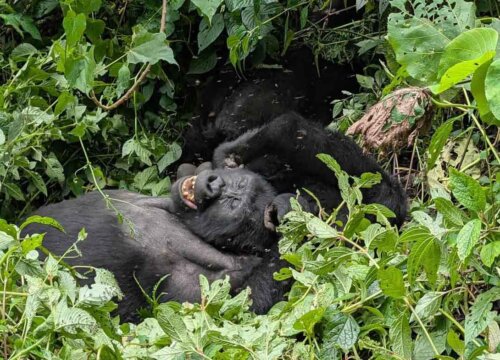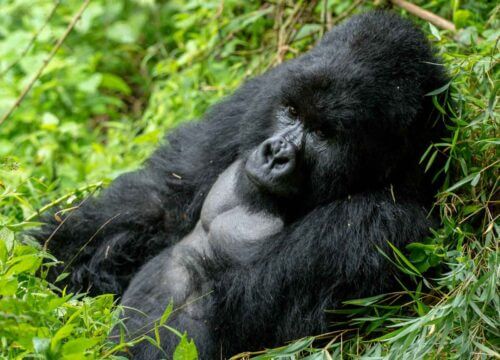Difference between Gorillas and Chimpanzees
Difference between Gorillas and Chimpanzees
Gorillas and chimpanzees are two of the most fascinating primates on the planet, sharing close genetic ties with humans. While both species belong to the Great Ape family, they have distinct characteristics, behaviors, and habitats that set them apart. Uganda, a prime destination for primate trekking, offers unique opportunities to observe both mountain gorillas and chimpanzees in their natural environments. This guide explores the differences and similarities between gorillas and chimpanzees, helping travelers and wildlife enthusiasts understand these incredible creatures better.
Difference between Gorillas and Chimpanzees
Size and build: Gorillas are significantly larger than chimpanzees. Adult male gorillas known as silverbacks can weigh up to 200 kilograms and stand up to 6 feet tall when upright. In contrast, adult male chimpanzees usually weigh between 40 to 60 kilograms and are about 4 feet tall. Gorillas have a thick, muscular build while chimpanzees are thinner.
Habitat preferences: In Uganda, gorillas are primarily found in the dense, mountainous forests of Bwindi Impenetrable National Park and Mgahinga Gorilla National Park. Chimpanzees, on the other hand live in a wider range of environments like the tropical forests of Kibale National Park, Budongo Forest and Kyambura Gorge. Gorillas prefer higher altitudes and thicker vegetation while chimpanzees thrive in lower-altitude forests and woodland savannas.
Social structure: Gorillas live in stable family groups led by a dominant silverback male. These groups usually consist of one silverback, several females and their offspring. Chimpanzees however, have a more fluid social structure called a fission fusion society. Their groups can change frequently as individuals come and go and they often form temporary alliances for specific purposes like hunting or defense.
Diet: Both species are primarily herbivorous but have distinct dietary preferences. Gorillas mainly eat leaves, stems and shoots. They also occasionally consume fruits while chimpanzees eat fruits, seeds, insects and small mammals.
Behavioral traits: Chimpanzees are highly active and energetic, often seen swinging through trees or engaging in playful behavior while Gorillas are more reserved and spend much of their time on the ground hunting or resting. While both species exhibit intelligence, chimpanzees are known for their tool use and problem solving abilities which are less commonly observed in gorillas.
Communication: Both gorillas and chimpanzees use vocalizations, facial expressions and gestures to communicate but their styles differ. Chimpanzees are more vocal and have a wider range of calls including screams, hoots and grunts. Gorillas rely more on body language and deep chest beats to express dominance or scare away threats.
Reproduction: Gorilla females typically give birth to one offspring every four to six years due to their longer gestation period of about 8.5 months and extended parental care while Chimpanzee females reproduce more frequently with a gestation period of about 7.5 months.
Lifespan: In the wild, gorillas tend to live longer than chimpanzees. Gorillas can live up to 35 to 40 years in their natural habitat while chimpanzees usually live around 30 to 35 years. In captivity, both species can live significantly longer due to better access to food and medical care.
Threats and conservation status: Both species face threats from habitat loss, poaching and diseases. However, mountain gorillas in Uganda are critically endangered with an estimated population of just over 1,000 individuals worldwide. Chimpanzees are classified as endangered but have a larger population spread across Africa. Conservation efforts in Uganda focus on protecting habitats and promoting eco-tourism to support both species.
Human interaction: Chimpanzees are more likely to come into conflict with humans due to their wider distribution and tendency to raid crops in agricultural areas. Gorillas, on the other hand are less confrontational and generally avoid human settlements. In Uganda’s national parks, both species attract tourists for trekking experiences but gorilla trekking is often seen as a more exclusive adventure due to their limited numbers.
Explorer More Safaris
- 14-Days Uganda Safari Gorilla Chimpanzees and Wildlife
- 12 Days Gorillas and Chimpanzees Wildlife Safari
- 10 days best of uganda primates & wildlife safari
- 6 Days Gorillas and Chimpanzee Trekking Safari
- 3 Day Bwindi Gorilla Trekking Safari
- 4 Day Uganda Gorilla Trekking and Wildlife Safari
- 4 Days Gorilla Trekking and Adventure Safari
- 5 Days Uganda Gorillas and Chimpanzee Tracking Safari
- 4-Day Rwanda Gorilla Trekking and Golden Monkey Tracking Safari
- 5 Day Gorilla Habituation and Chimp Trekking
- 4-Day Uganda & Rwanda Gorilla Trekking Tour
- 3 Days Bwindi Gorilla Trekking Ugnada from Rwanda
- 10 Days Uganda Primates and Game Safari

